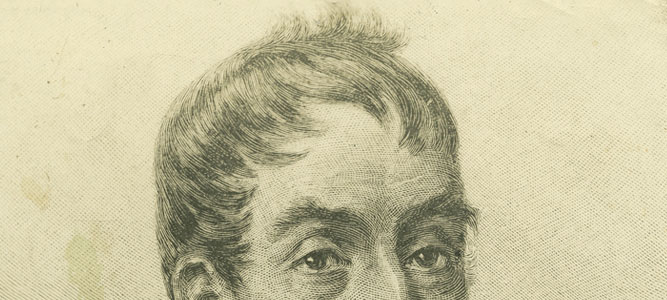Father of Australia
Lachlan Macquarie & His Legacy to Tasmania. Two hundred years ago, Tasmania, (then Van Diemen’s Land) was visited by a remarkable man, Governor Lachlan Macquarie. His influence upon the struggling colony was profound. His zeal to get the colony’s affairs in order, as he had in Sydney, was his main directive. In this, he was successful.
Lachlan Macquarie was Australia’s fifth governor and when he arrived in Sydney in 1810 he found the colony of NSW in a state of utter anarchy. It was this man from the highlands of Scotland who within one year placed the colony on the road to stability. He has been dubbed therefore, The Father of Australia.
He was born in 1762 and as a boy he lived with his mother on the island of Mull in the Hebrides where he supported the family out of the pittance he was earning. In 1776 he joined the army, serving in India. On a return trip to England in 1793 he married Jane Jarvis, who sadly died three years later from tuberculosis. In 1805 he proposed to Elizabeth, who accepted and they were married in 1807. By 1813 he was a major-general. When the rebellion against Governor Bligh occurred, the British Government decided to recall the Rum Corp and replace it with Macquarie’s 73rd Regiment. Macquarie actively sought the position of Governor of NSW and after arriving in Sydney on 1 January 1810, accompanied by Elizabeth, he took office with full ceremony as governor and commander of the military forces. Macquarie, deeply religious, with great energy and determination brought – what was then nothing more than a gaol – the colony under benevolent paternalism.
In those times, Van Diemen’s Land (VDL) was administered by a lieutenant-governor, with the New South Wales governor having ultimate jurisdiction. Port Dalrymple was virtually autonomous. By the time of Lachlan and Elizabeth’s visit to VDL in November 1811, the island was administered by Captain John Murray. Their journey from Sydney had been a rough passage and they were received with great enthusiasm. They climbed Mt Nelson and Lachlan ordered the erection of a signal staff on its summit. He was not impressed with the street layout of Hobart Town and the erratic erection of buildings. He set about laying the town in a regular manner, centring it on St George’s Square, now Franklin Square, and the public buildings. Mrs Macquarie took an interest in the settlers, inquiring personally into their needs and concerns. From Hobart Town they journeyed to Launceston and it was Lachlan who was not in favour of the northern settlement being independent from the southern one. Returning to Sydney he ordered the VDL colony to be under one government.
The Macquarie’s’ legacy to Tasmania is enormous. He had the strength of character and enthusiasm to mould events. Hobart streets Macquarie, Murray, Elizabeth, Argyle, and Antill were named by Lachlan, besides designing the city. Just outside the town, he stopped on a small hill and to his aide-de-camp, Captain Antill, he said, “This is the spot for a barracks”. This became Anglesea Barracks. Travelling to Launceston, they named Mt Dromedary, Macquarie Springs, Antill Ponds, and the Elizabeth and Macquarie Rivers. York Plains, Epping Forest, Breadalbane and Corra Linn were also named. The governor and Elizabeth, rising at five each morning, rode several miles before breakfast at ten. Surveyor Meehan was instructed to mark out the main highway between the two main towns. Elizabeth explored with her husband, and he organised communication across the island, including the setting up of finer-posts and establishing military camps to be set up along the route. They left the Tamar for Sydney on the Lady Nelson, but it was a slow journey, taking a full week to sail the river, spending Christmas in Bass Strait.
That was his first visit to VDL, visiting the last time on the cessation of his office. Accompanied now by Lachlan junior, he named and mapped out Campbell Town, Ross, Oatlands, Brighton and Elizabeth Town (later renamed New Norfolk).
His term of governship was that of an able administrator and social reformer, having a humanitarian attitude towards convicts, opening up the first school for Aboriginals (1816) and treating everyone as an equal. This brought enemies and his health began to suffer. At 60 years old, he was “heartily tired” and requested permission to resign. He sailed in 1822 and died two years later, being buried in his birth-place, the Mull in the Hebrides. Elizabeth lived until 1835 and is buried with her husband.
Macquarie did have his detractors and enemies. One of them was Commissioner John Bigge who was authorised by London to send back a report on conditions in Sydney and Van Diemen’s Land. Bigge was not persuaded by Macquarie’s explanation of his policies. Bigge toured the colonies collecting complaints and much gossip regarding Macquarie. His report back to London was critical of Macquarie and it soon became apparent to the governor that he was losing support in England. Bigge’s criticisms were severe and even though Macquarie attempted to answer them, he was not given any solace. Macquarie realised that his reputation had been tarnished permanently.
Whatever his critics may say, there is no doubt Macquarie presided over a tremendous transformation of both colonies, in Van Diemen’s Land and Sydney. Visiting Frenchman, Jacques Aargo, who was with Louis Freycinet’s French expedition to the Pacific, expressed great admiration of Macquarie and what he had achieved.
Macquarie’s contribution to Tasmania is well summed up by early historian, John West*, when he commented that before his arrival, “there were but hutted camps. To their improvement he devoted all his energies; he foresaw and felt the inspiration throughout their destined greatness (i.e. the colonies – ed). His disinterestedness was exemplary; throughout his long administration, no sordid project was connected with his name. No patriot ever laboured more earnestly for his country’s welfare.
“He accepted neither gold nor silver, as the recompense of his cares, he took pledges to the colonies for the immortality of his name.” – The Rev. John West, early Tasmanian historian (1809-1873)
Words: Reg. A. Watson.


